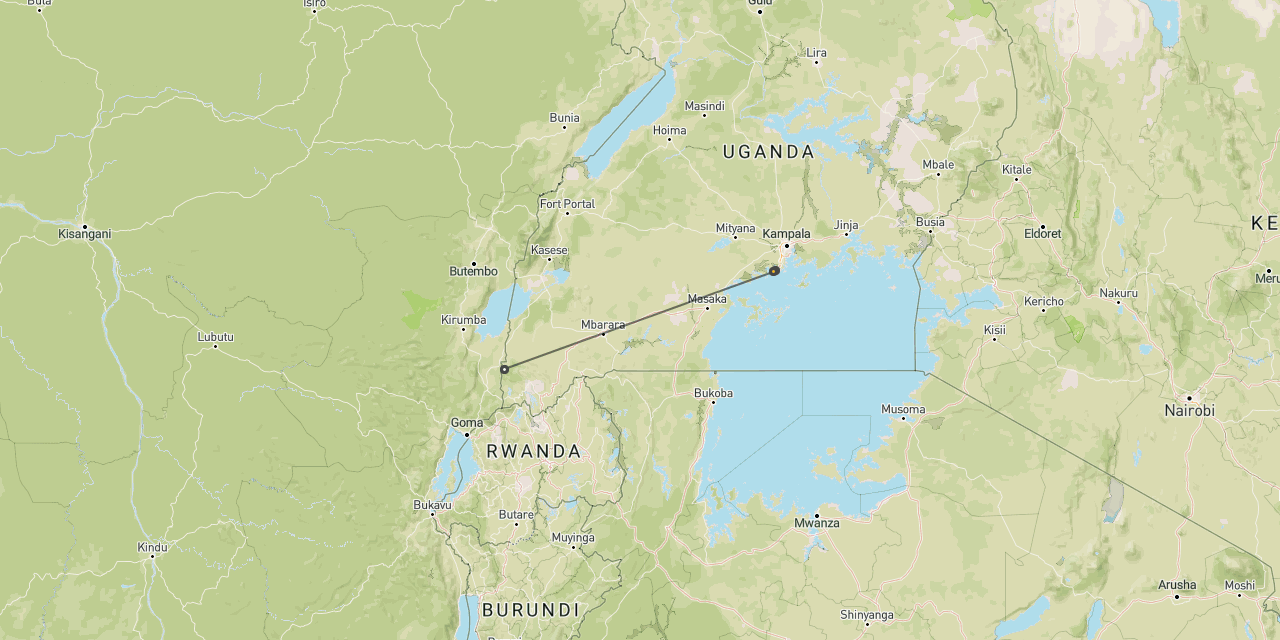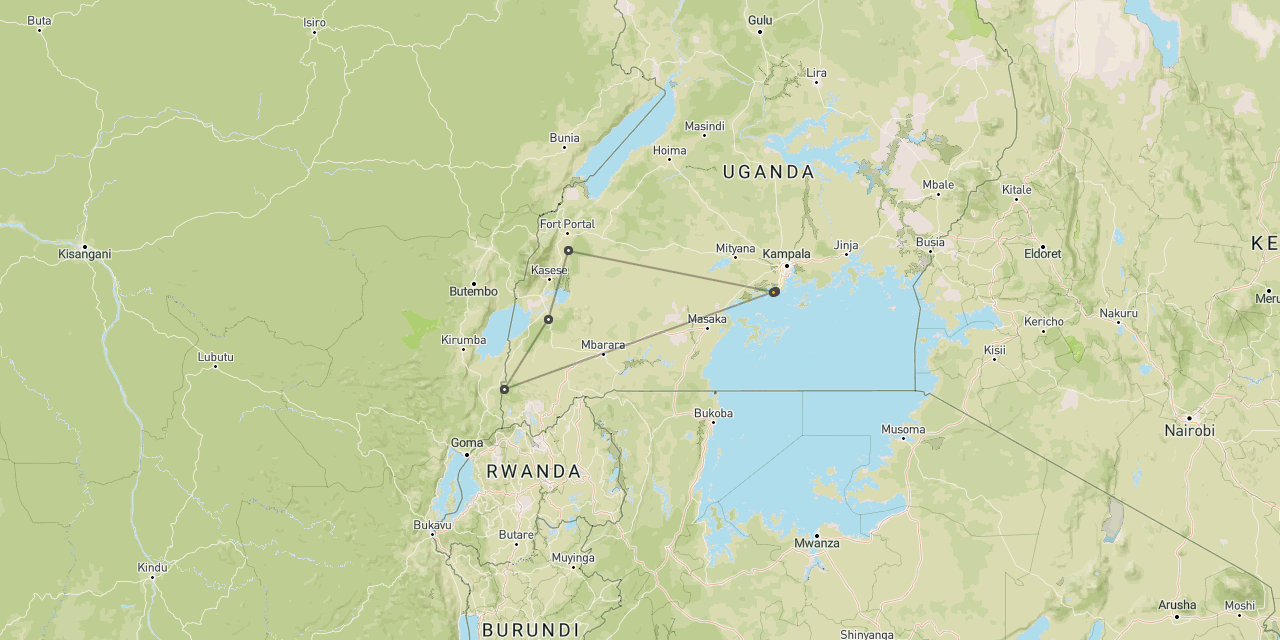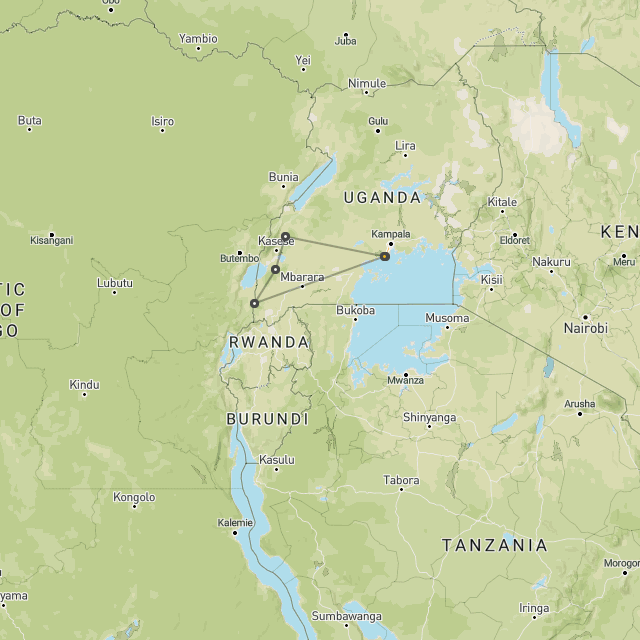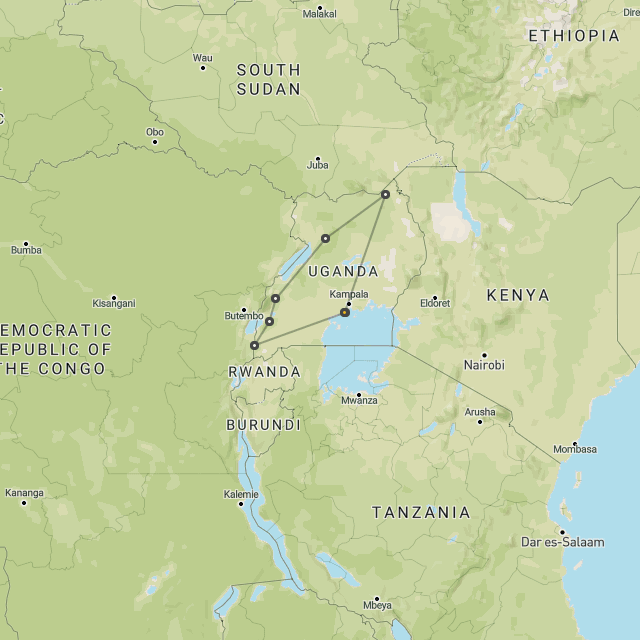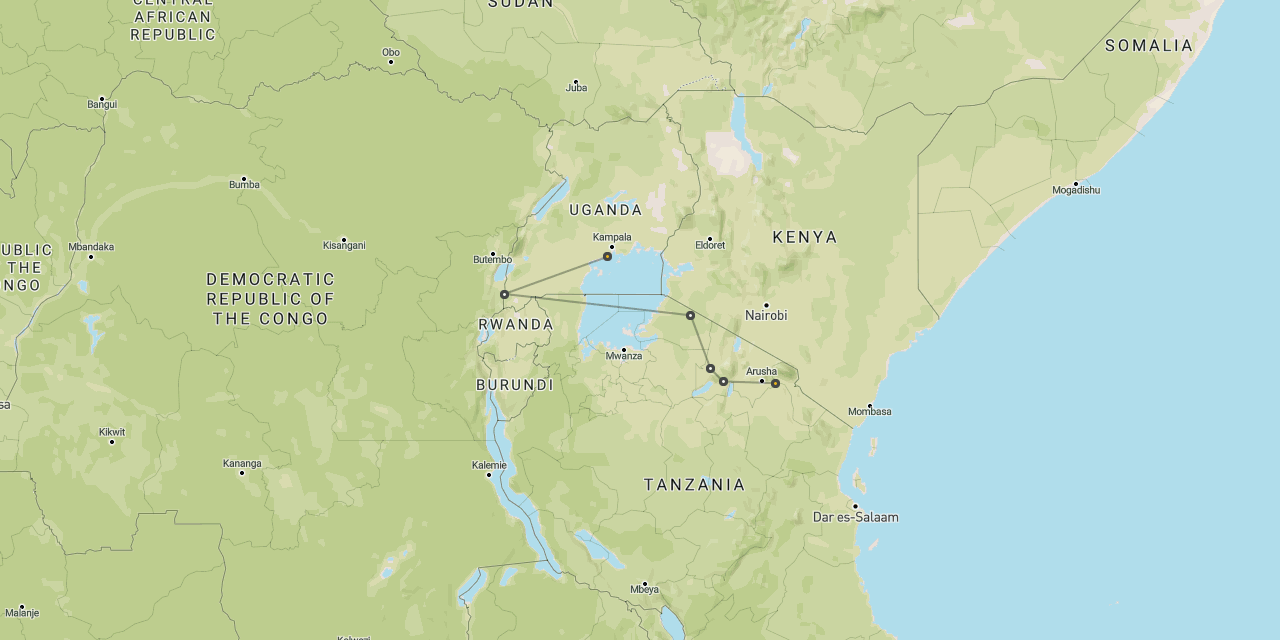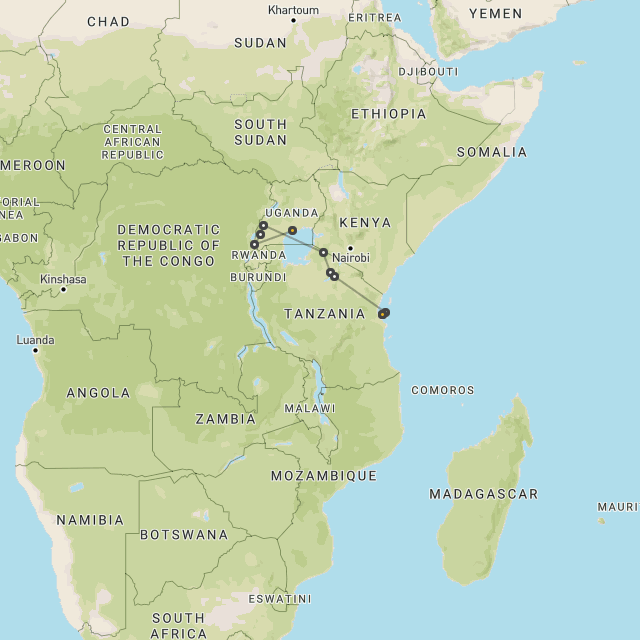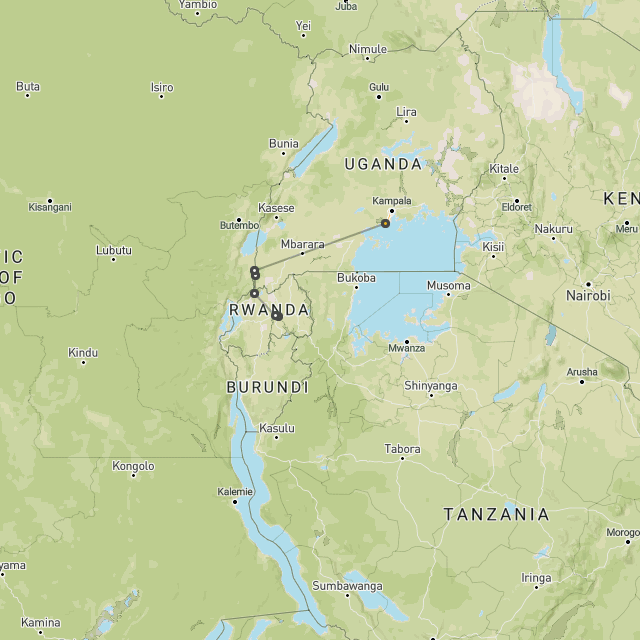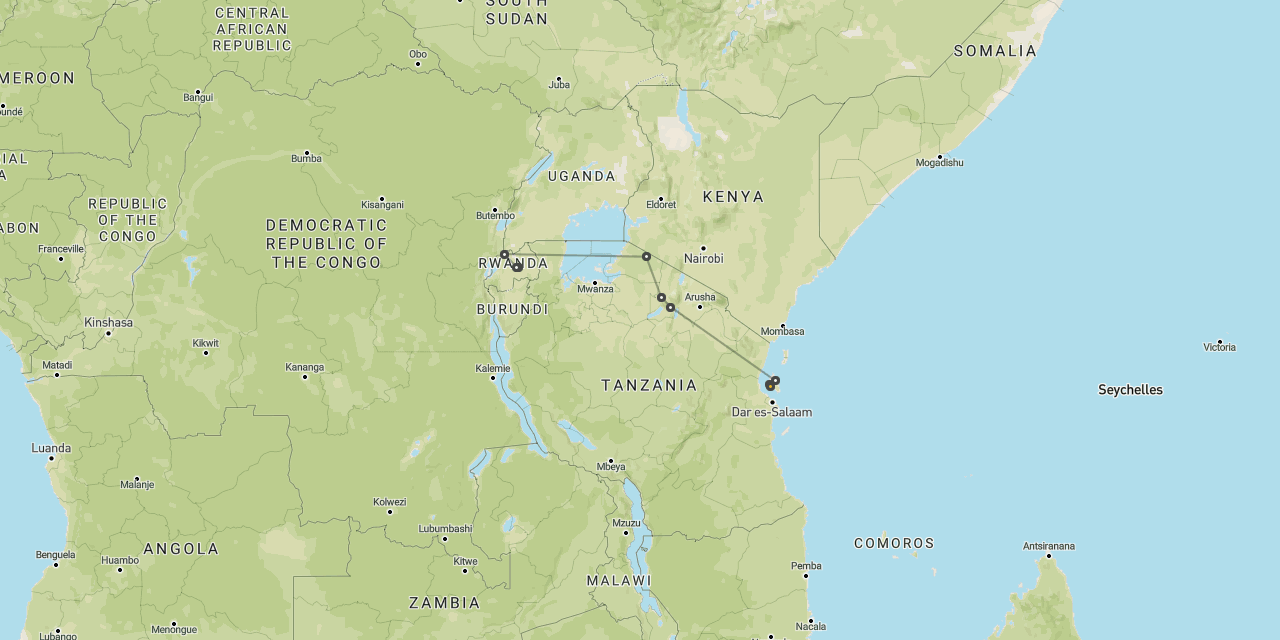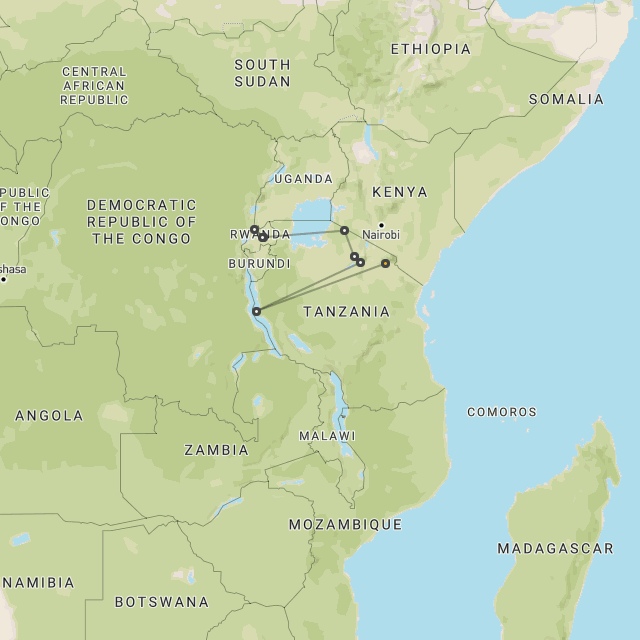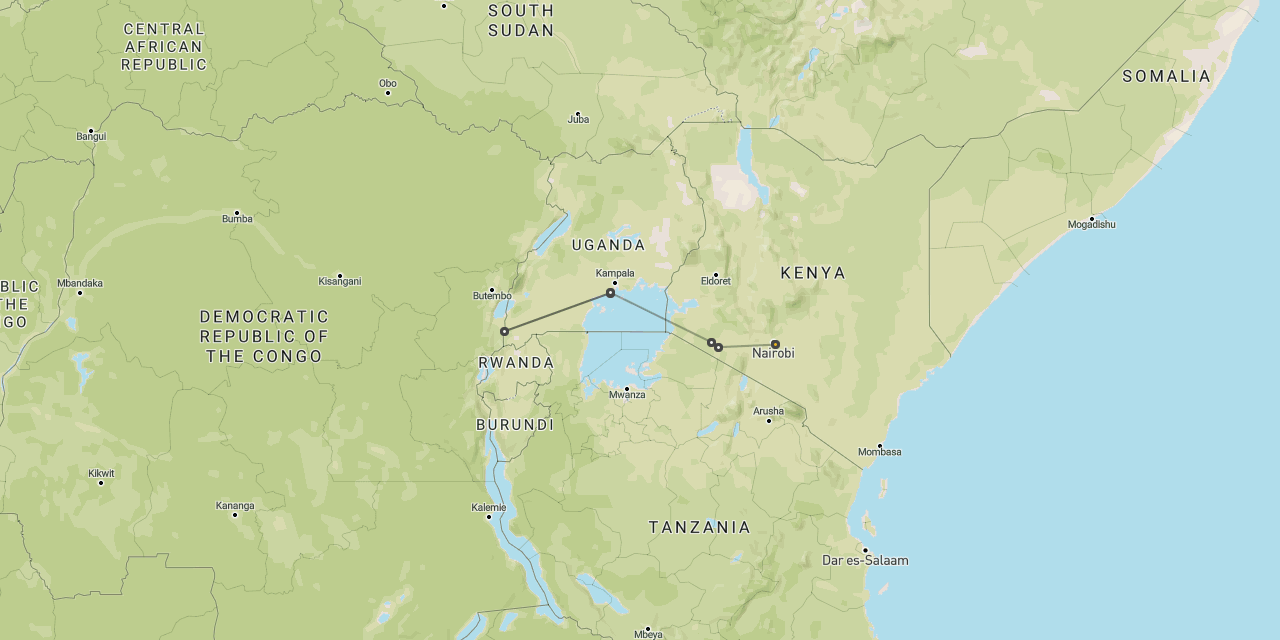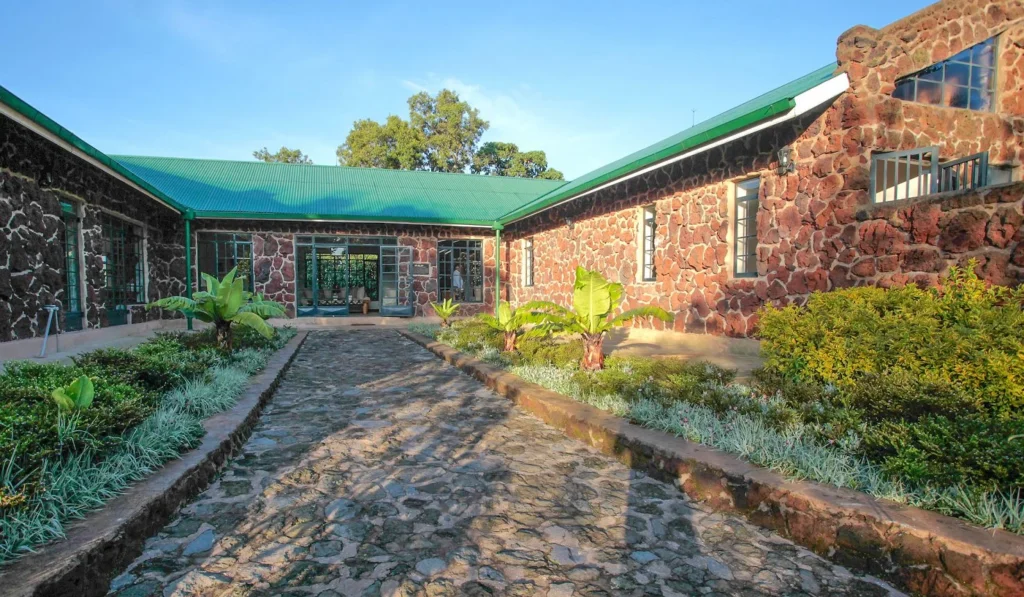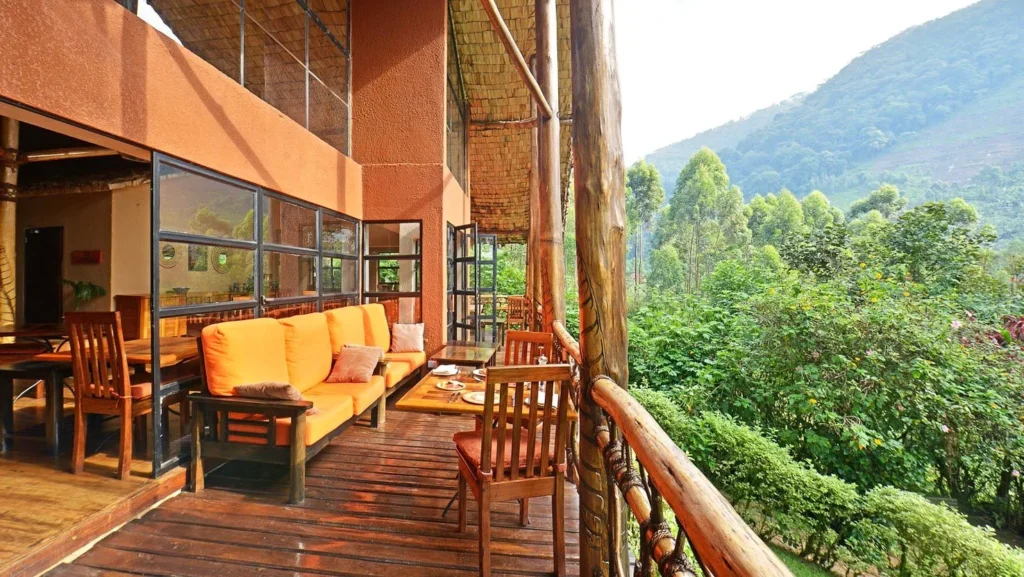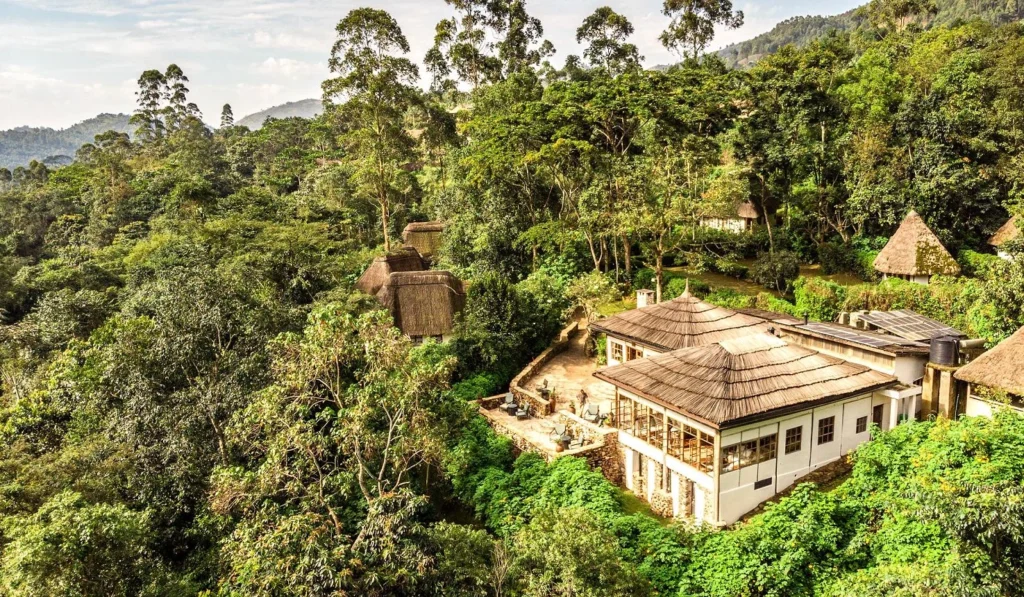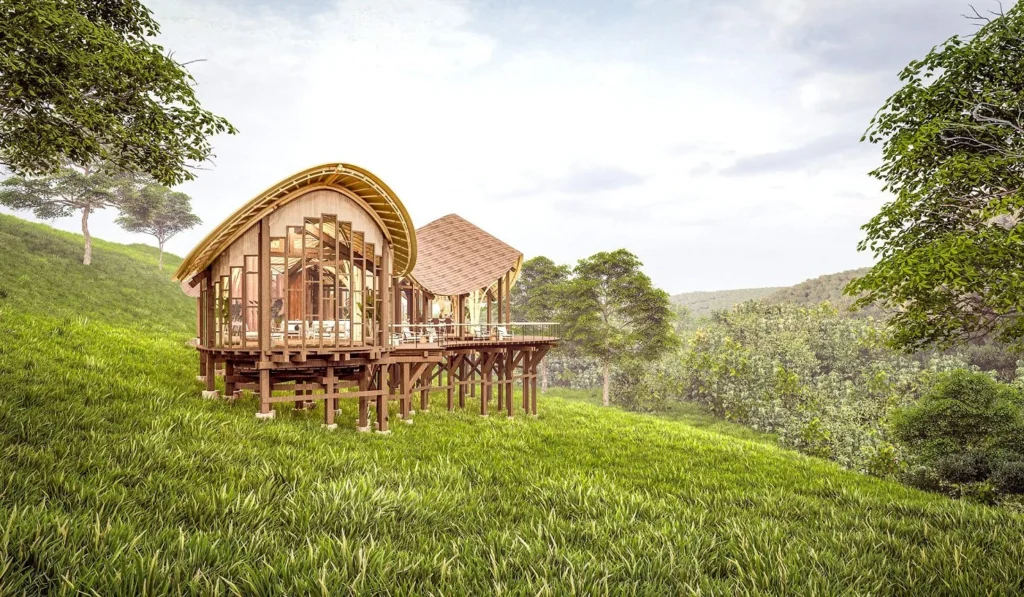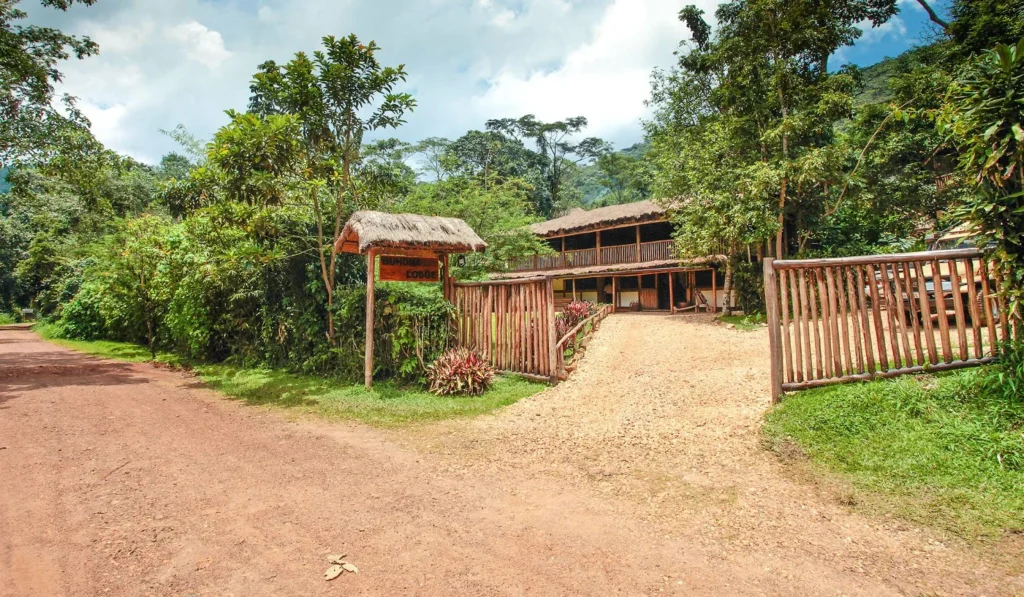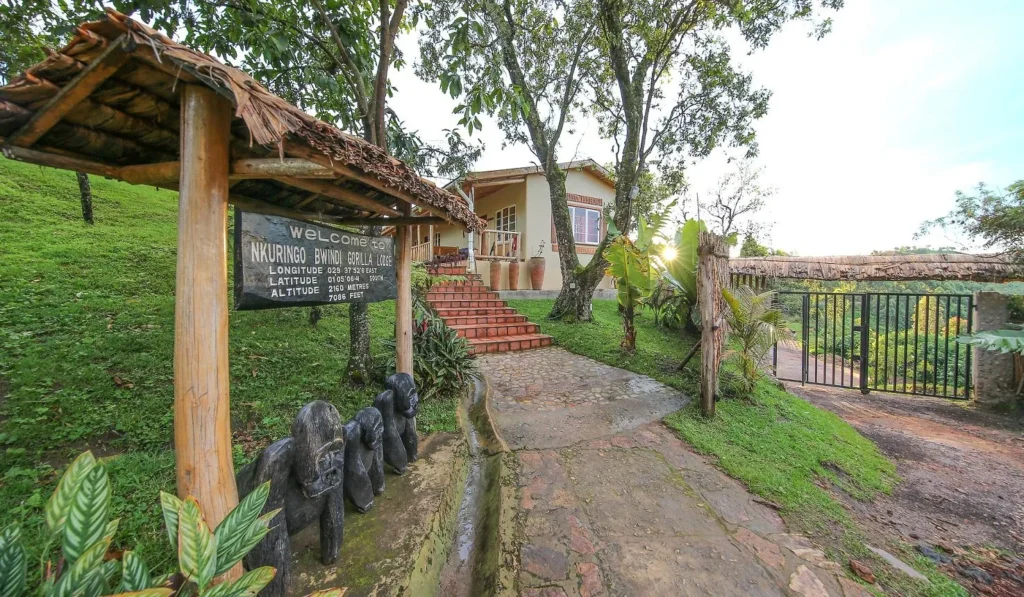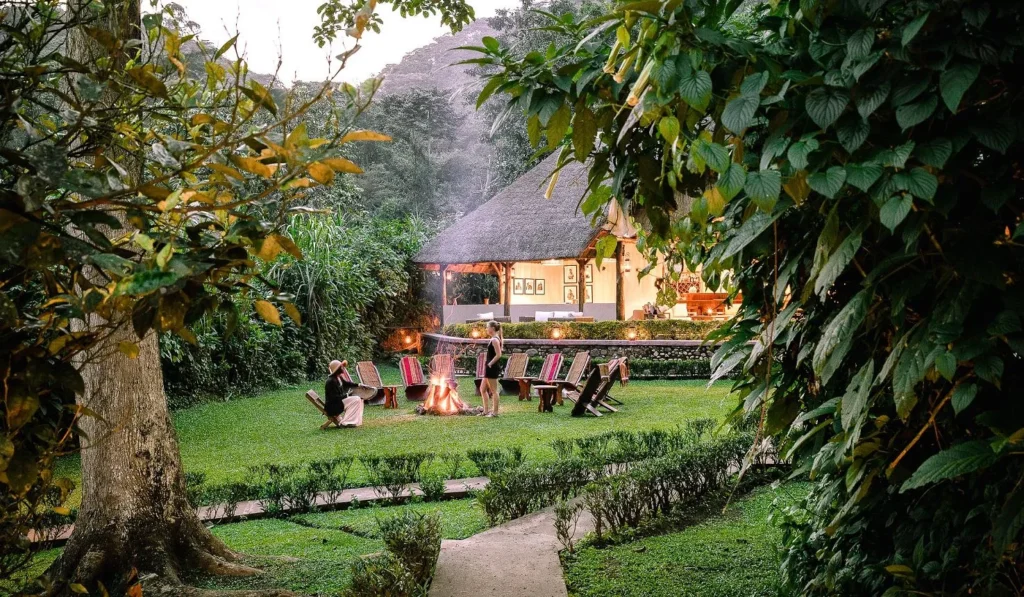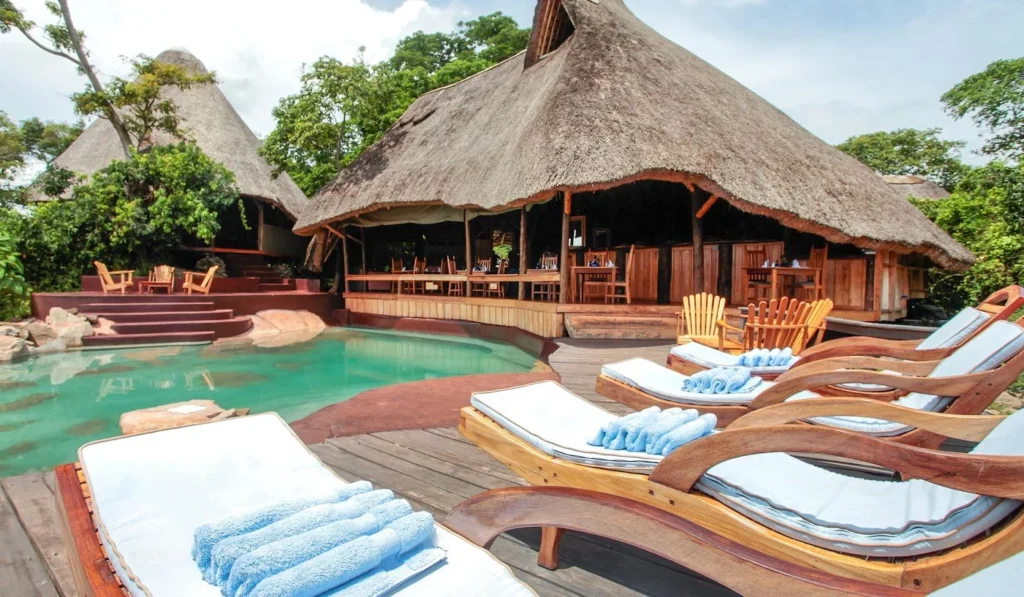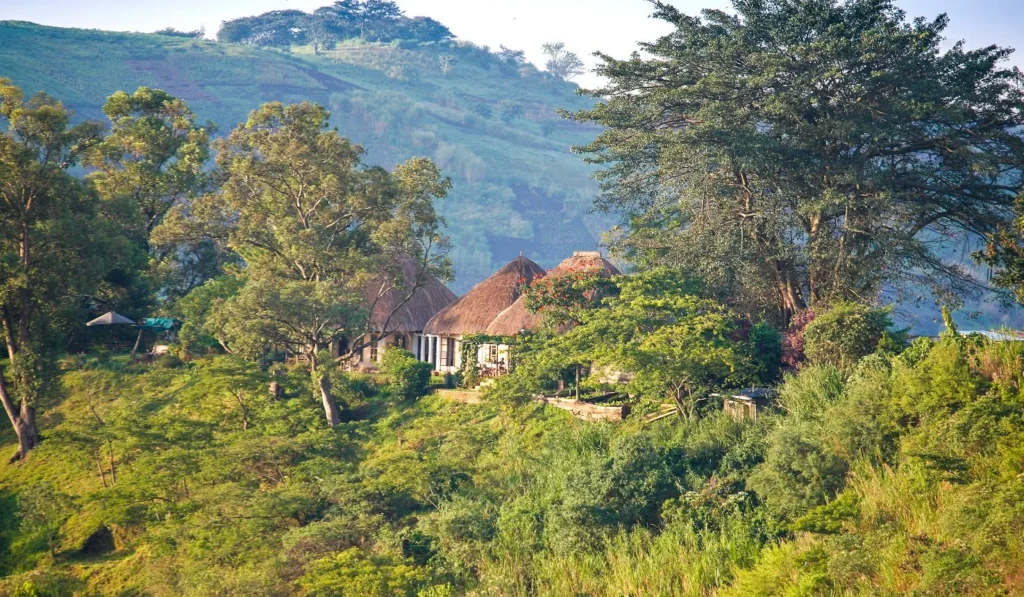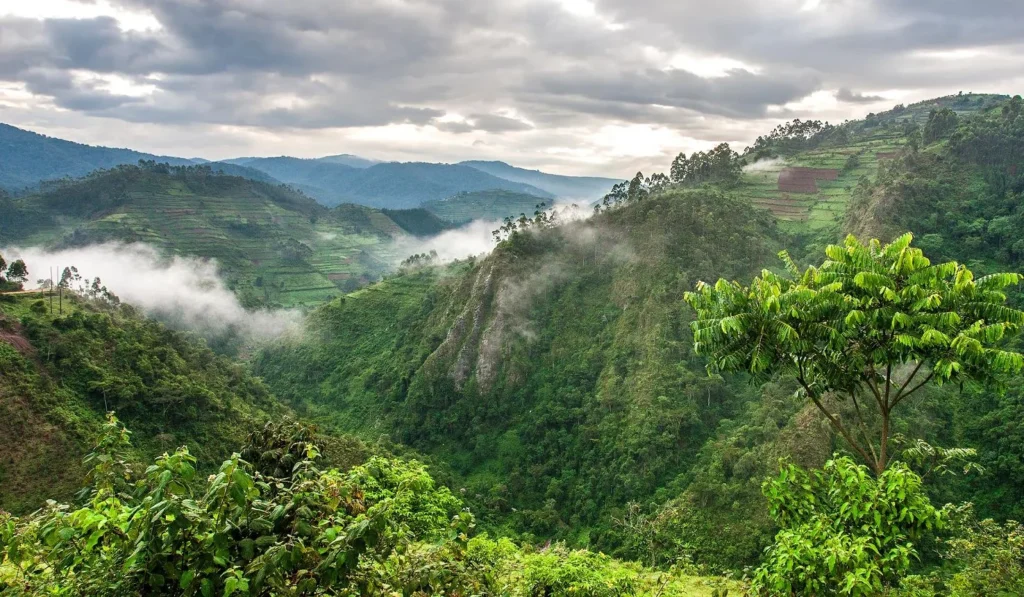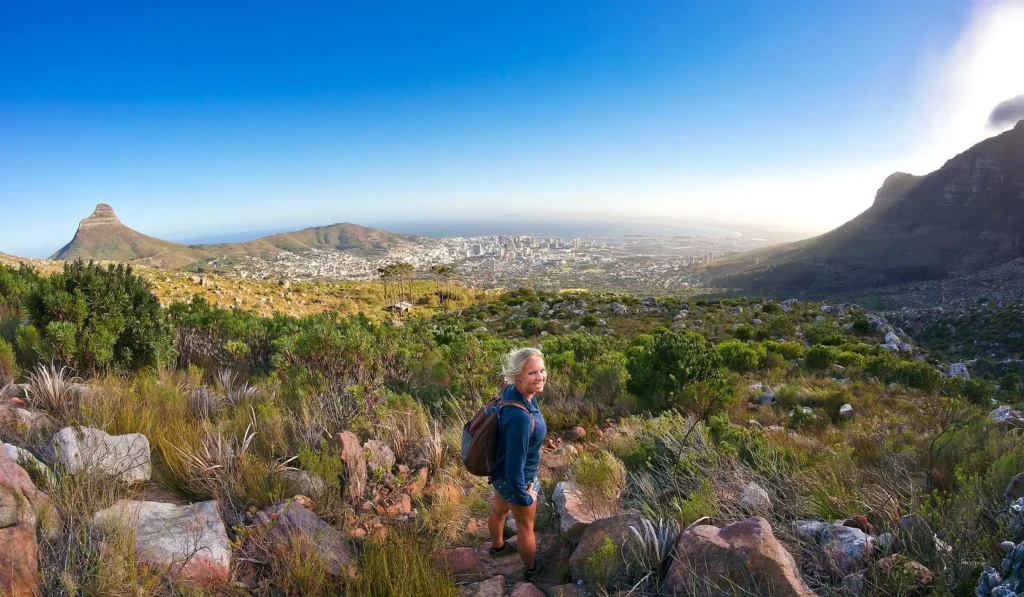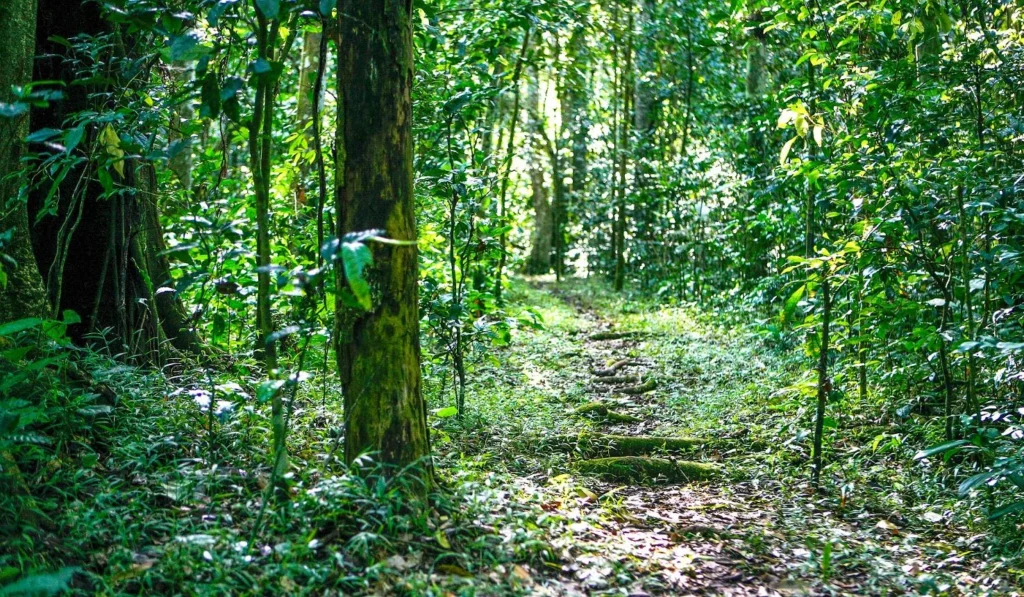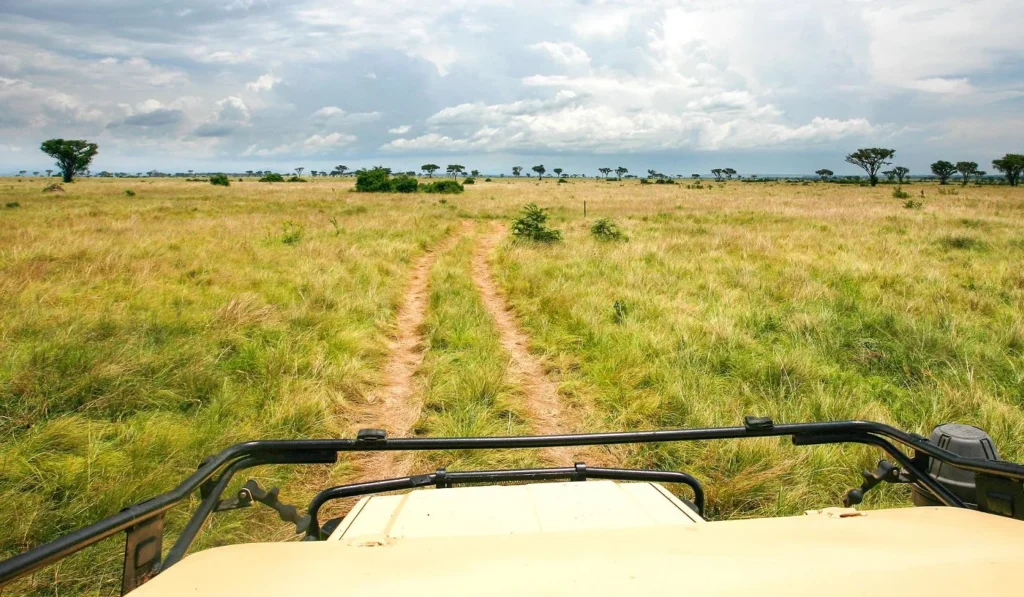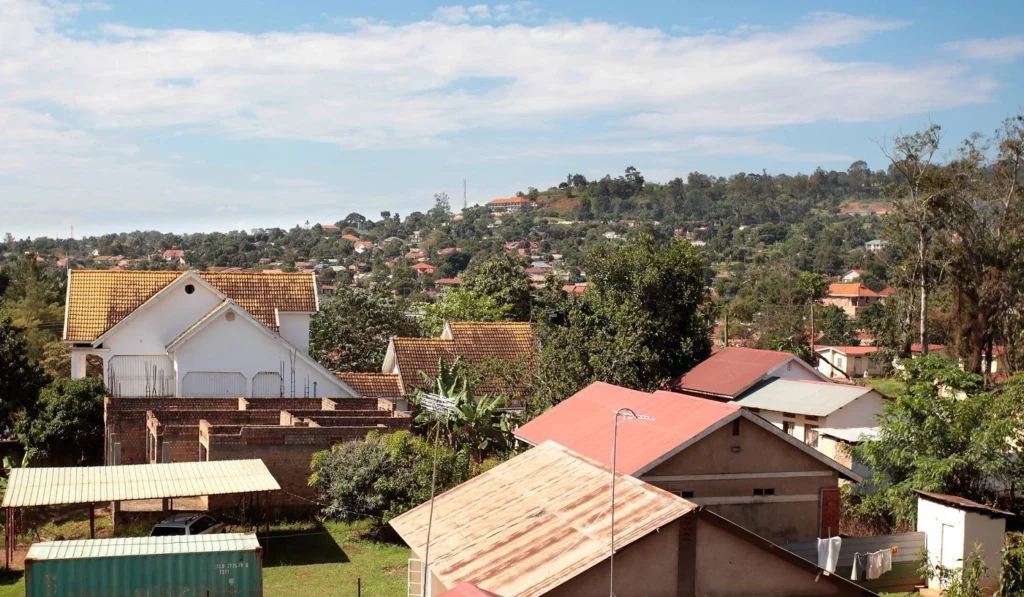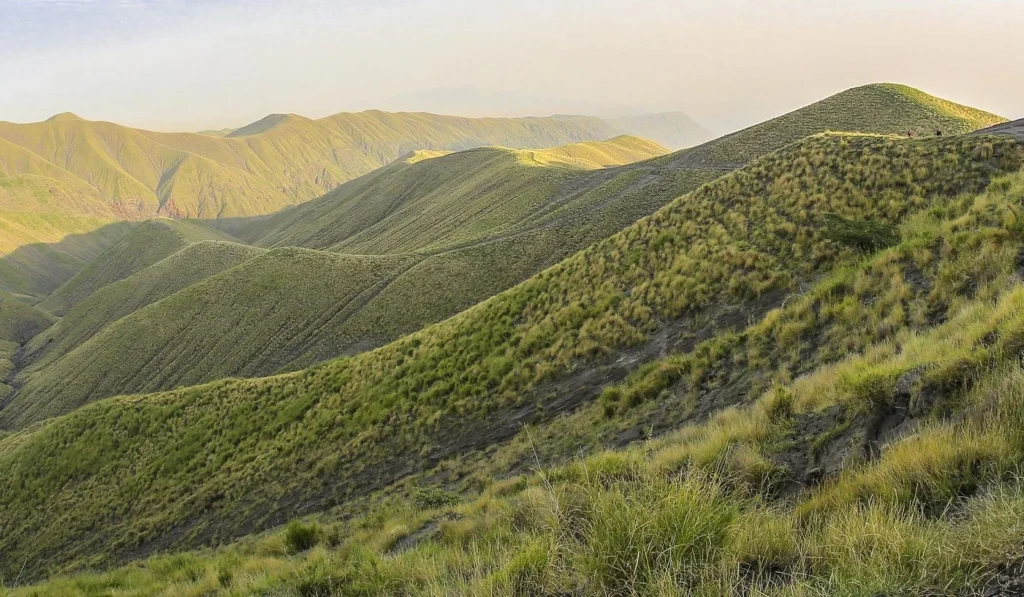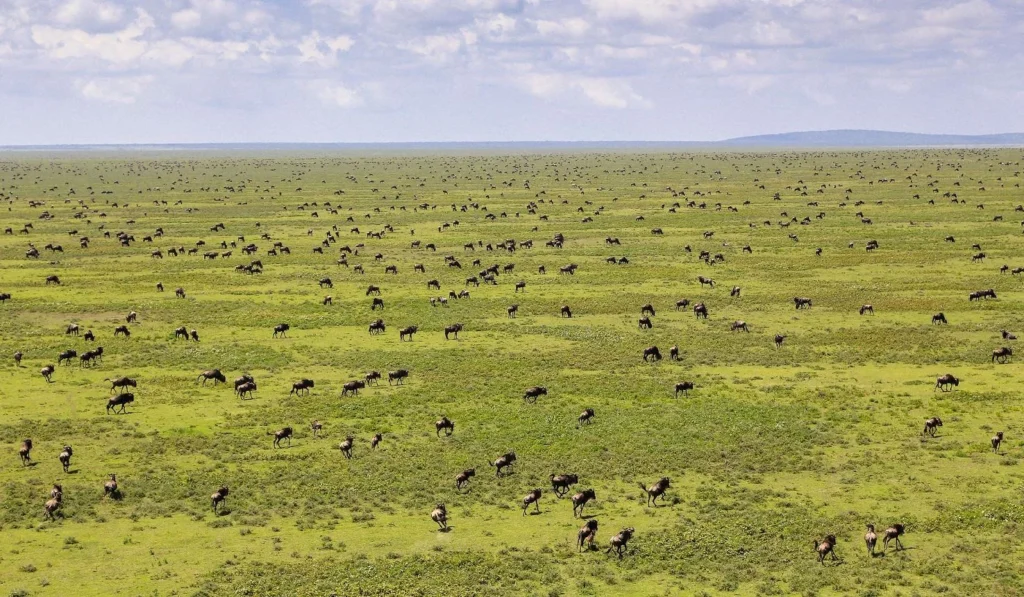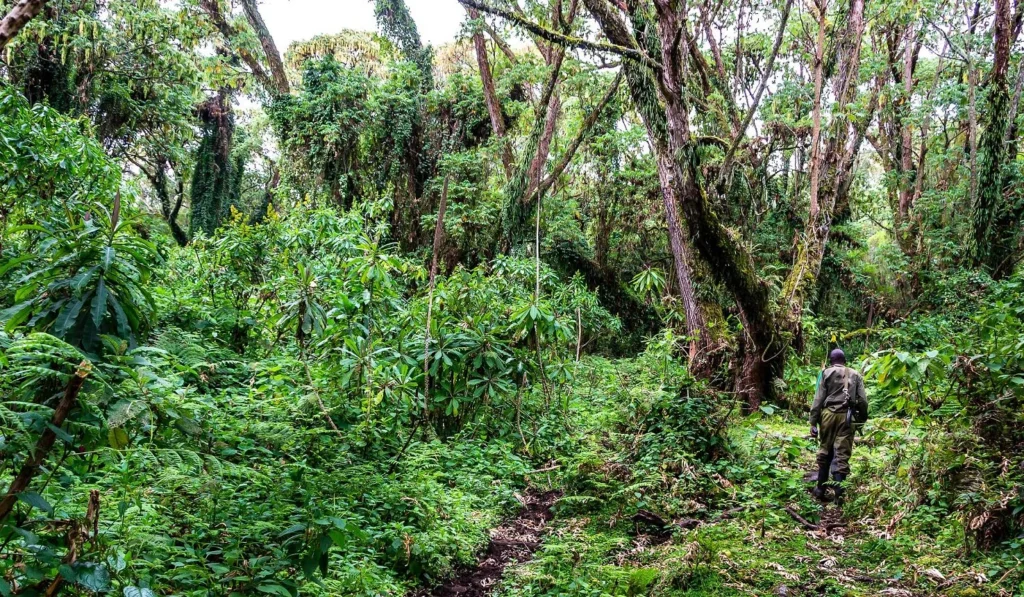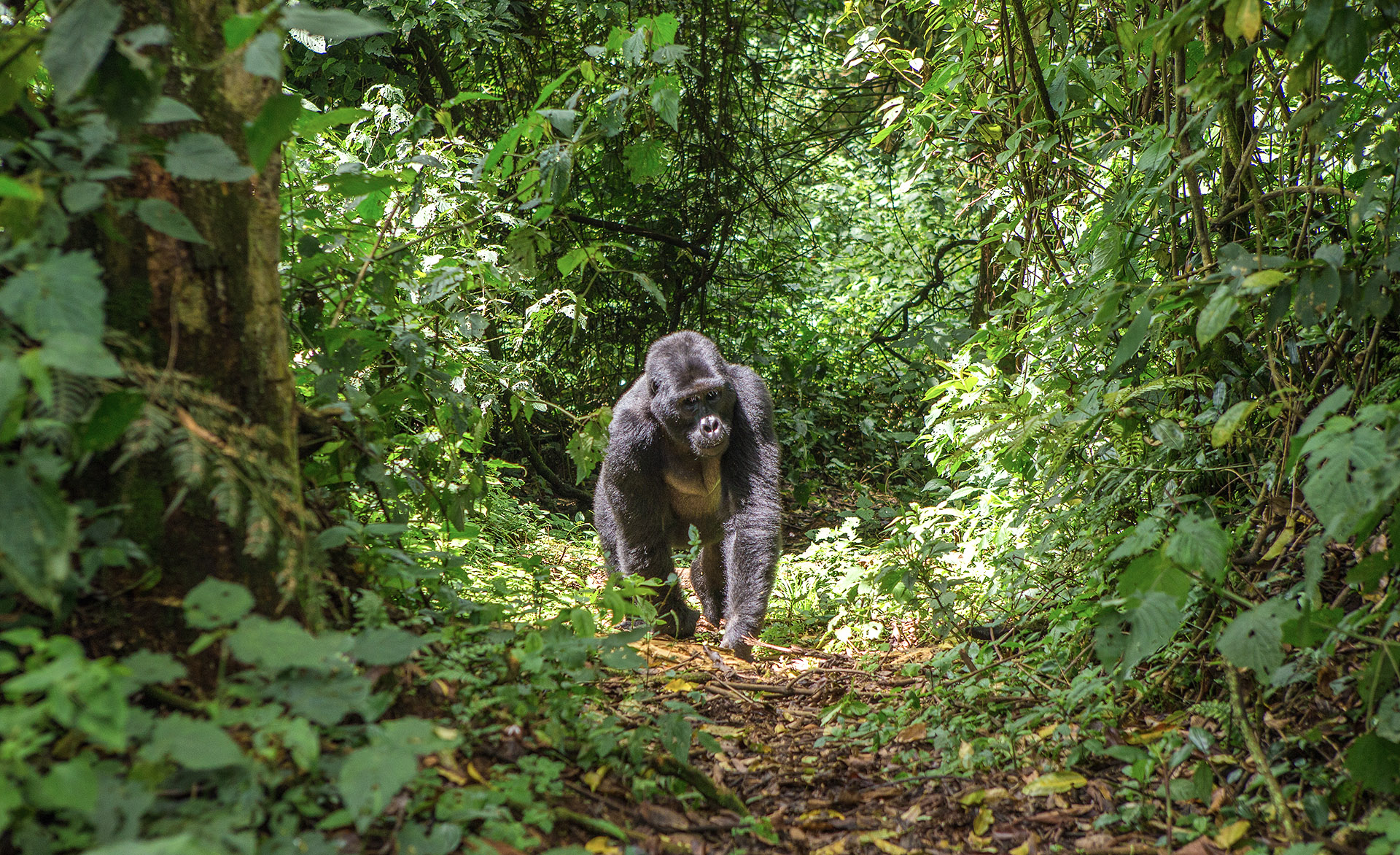
Gorilla tracking in Bwindi Forest
Bwindi Forest
is home to around
twenty families of gorillas
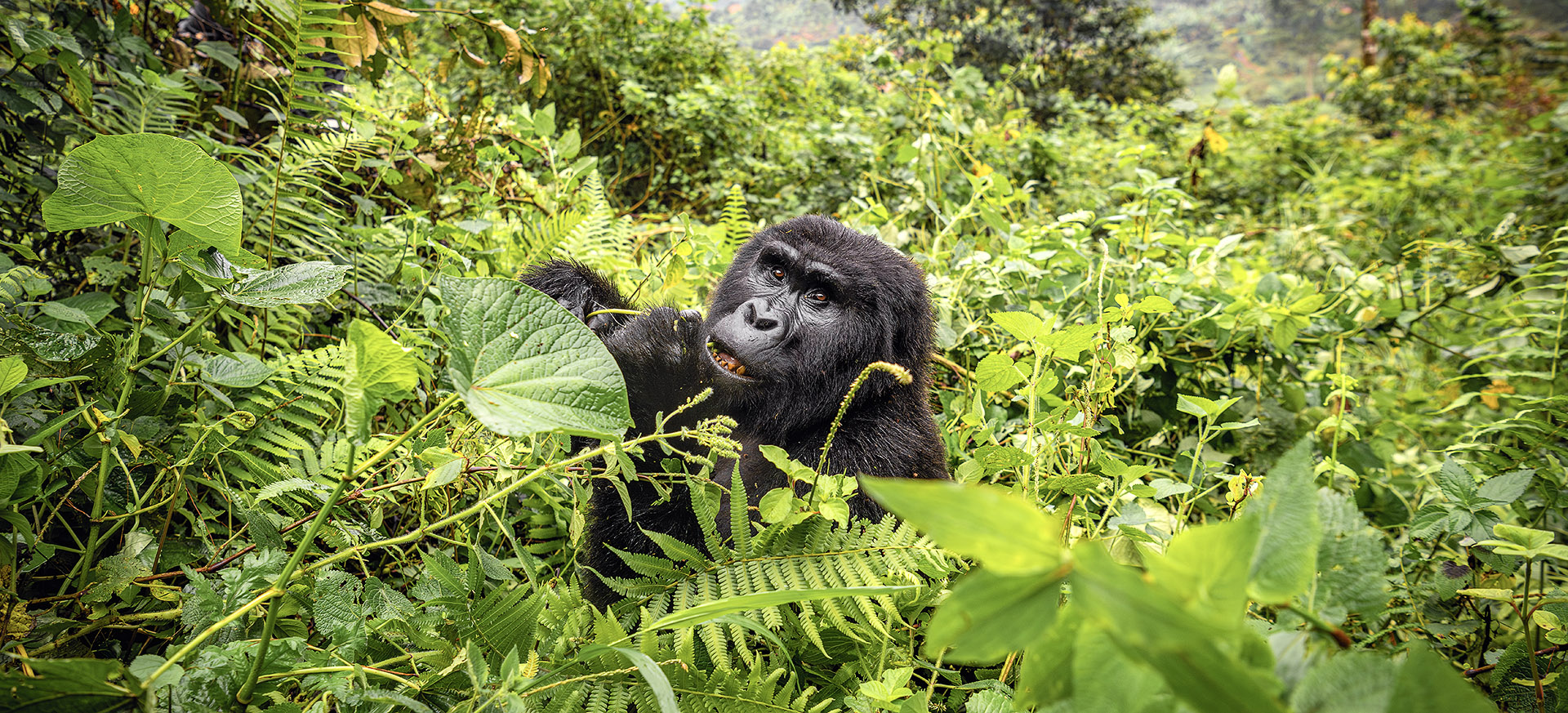
Gorilla families in the Bwindi Forest
around 400 gorillas in twenty families
Mountain gorillas are an endangered species, but attempts during the 1960s and 1970s to create a captive population to serve as a backstop in the event of a catastrophic collapse in wild populations proved impossible. Although the animals were able to breed, not a single baby gorilla was able to survive. There are presently no known mountain gorillas currently in captivity.
The future of the species is therefore completely dependent on the health and sustainability of the populations here and in the nearby Virunga National Park in Rwanda.
Bwindi Impenetrable Forest contains an estimated 400 individual gorillas in 20 troops, of which 9 are habituated to the presence of humans, which means that they can usually be approached without being scared off.
Only 72 gorilla tracking permits are issued each day, so you need to book extremely early and pay up front to secure a spot to visit one of the more interesting and accessible gorilla families.
Keeping tabs on the various families is quite difficult, but in this section we have gathered together information from various sources. It may not be up to date, but it should convey something of the intimacy and dynamics of the different families.
These groups are accessed from four separate Park Gates on different sides of the forest …
Area A : Buhoma
Buhoma is located on the northwestern side of the forest and is home to the main town and the park headquarters. This is where the first gorilla groups were habituated back in the 1990’s and is home to the majority of the area’s accommodation. Guests at lodges in this area have access to three habituated gorilla groups, one in the immediate vicinity and the other two requiring a drive of up to an hour to the trailheads. When permits run low it’s also possible to access the gorillas of the Ruhija area to the northeast, although it is about an hour and a half drive to the trailhead there.
Family group 1 : Rushegura
The Rushegura gorilla family came together in 2002, after one of the silverbacks from the Habinyanja group decided to break away. The Rushegura group is a calm family of 19 members, including one silverback. In the past they used to cross the border and venture in the neighbouring DRC every now and then, but they always returned and have now settled in Bwindi.
Family group 2 : Mubare
Found in the Mubare Hills area, the Mubare family is the oldest habituated gorilla group in Uganda. The group started with 12 family members and later grew to 18 individuals. Unfortunately, due to fights with other wild gorilla groups, it lost several animals and remained with five members for a number of years until March 2013 when four other members joined, including a new dominant silverback. Permits for this group are in particularly high demand due to the usually easy access.
Family group 3 : Habinyanja
The Habinyanja group has 18 members including two silverbacks and was first habituated in 1999. This is a fascinating family with a lot of drama and commotion caused by power struggles between the dominant silverbacks and fights for family leadership. But treks to visit them can be long and arduous.
Family group 4 : Katwe
No further information is presently available on this family.
Area B : Ruhija
The settlement of Ruhija is the location for a park gate to the northeast of the reserve. This is the point of access for two habituated groups (Oruzogo and Bitukura), plus the one group reserved for research only (Kyagurilo). These families have been habituated relatively recently compared with those at Buhoma, but are still very rewarding to visit.
Family group 5 : Oruzogo
Situated in the Ruhija area, the Oruzogo group is one of the more recent families to be habituated, with 16 members including one silverback. The family has some playful and energetic juveniles.
Family group 6 : Bitukura
Bitukura is a peaceful family of 14 members including four silverbacks. The group was named after a river where the family members were first sighted. Their habituation that started in July 2007 was a relatively easy process as the gorillas were frequently encountered by the Uganda Wildlife Authority rangers during preceding years. Originally, the Bitukura family had 24 members, but due to disputes within the family some gorillas chose to leave the group and were probably recruited by other families.
Family group 7 : Kyagurilo
No further information is presently available on this family.
Area C : Nkuringo
The village of Nkuringo is situated on the southwest side of the forest and provides access to two families of gorillas (Nkuringo and Christmas). Trekking from here is notoriously tough because of the steep inclines immediately between the park gate and the forest itself. But the area is a lot less busy than Buhoma and in some ways scenically even more attractive.
Family group 8 : Nkuringo
The Nkuringo family has 18 members including two silverbacks. The family was led by a renowned silverback named Nkuringo who unfortunately died in April 2008, leaving two silverbacks, Safari and Rafiki, to contest the leadership. Tracking can be rather long and tough.
Family group 9 : Christmas
This new family became available to access in September 2018.
Area D : Rushaga
The Rushaga trailhead is to the southeast of the forest and is the base for up to five relatively recently habituated groups of gorillas (Nshongi, Mishaya, Kahungye, Bweza and Busingye).
Family group 10 : Nshongi
Nshongi was once the largest group habituated family, with 36 members, including four silverbacks, and was officially introduced in September 2009. It was named after the Nshongi River, where they were first sighted. In July 2010, however, the group split and numbers dropped to 26 members, the others going on to form the present Mishaya group. In 2013, the family split further and was reduced to 18 members, the departing members forming the Bweza group. The Nshongi group is in a large forested area where you can also see other primates, birds and butterflies.
Family group 11 : Mishaya
In July 2010 silverback Mishaya decided to leave the Nshongi group with some females and start his own family. He is a typical fighter and was able to gather more females from other non-habituated groups in the area. Mishaya is the only adult in the group and is known for being a real brawler.
Family group 12 : Kahungye
The size of this group is 13 members with three silverbacks. Visitors and gorilla tracking to the Kahungye group commenced in 2011, but in less than a year the group split, creating the new Busingye group. Before the separation, the family consisted of 27 individuals.
Family group 13 : Bweza
The Bweza family split from the Nshongi group in 2013. At first the park authorities thought the groups would rejoin, but when they didn’t this family was made available for tracking.
Family group 14 : Busingye
The Busingye gorilla group was formed by a breakaway from Kahungye group back in June 2012. It was the silverback Busingye who decided to split and create his own family. Busingye in the local language means ‘peace’, which is quite surprising since this ambitious silverback is known for his legendary fights with other groups. He likes showing his power and whenever encountering a wild family he mercilessly attempts to kidnap a female to add to his own family.
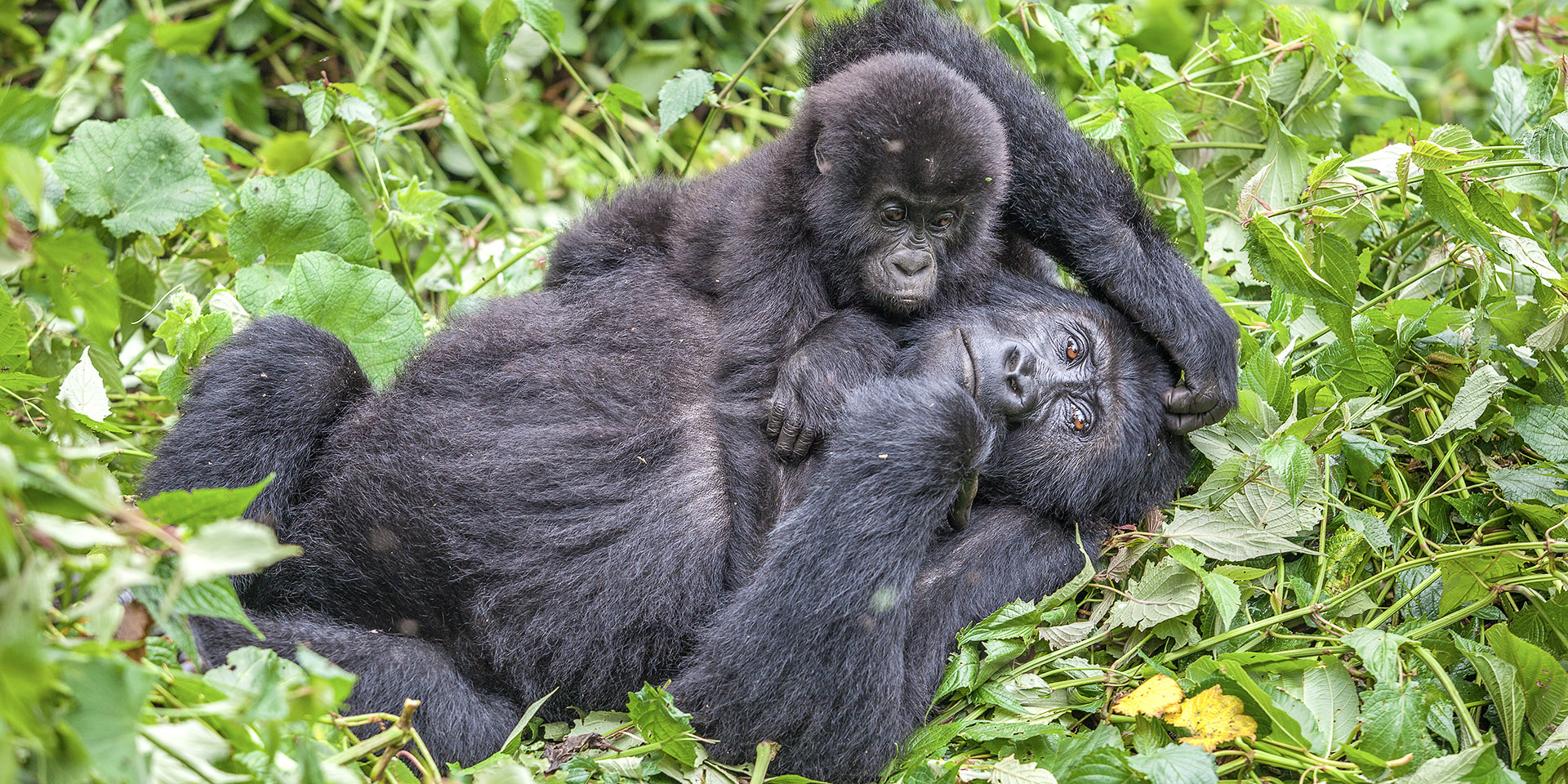
How gorilla tracking works in Bwindi Forest
guests are allocated onto specific gorilla families
Gorilla trekking is operated by the national park guides. Your driverguide will take you to the park gate for registration and collect you at the end of the trek, but will not accompany you into the park itself
On arrival at park headquarters guests are divided into small groups, each with an experienced ranger and allocated a target family.
The degree of difficulty of the trek can vary enormously. Time with the gorillas themselves is restricted to around one hour, so if your family group is within easy reach then you could be up and back in time for a late lunch. But these gorillas do have quite large territories and can sometimes prove much more elusive. If your target family has disappeared up the slopes then the trek can take a full day and be exceedingly tough, especially when it is wet and muddy. The rangers do try to take into account your apparent physical capabilities when dividing you up into groups, but in all events guests should have a good level of fitness.
Chances of seeing gorillas is very high. But there is a world difference between a distant glimpse and an intimate and prolonged encounter. The chances of success are very much dependent upon which target family you are allocated. Easier to reach families are usually reserved for guests who have already had an unsuccessful attempt. All of which means that if you include one trek in your trip your chances of a really good encounter are in the range 60% to 70%, whilst if you include two treks then your chances rise to well over 90%.
We therefore strongly recommend that you include at least two gorilla treks in your trip if possible.
It should be pointed out that the treks should be quite different, the gorilla territories are spread across a wide area so more often than not your two treks will be in completely different locations.
If you do return early then your guide is at your disposal for exploring the local areas, either in the vehicle or on foot. There are some lovely walks amongst the forests, farmlands and villages around the lodge itself.
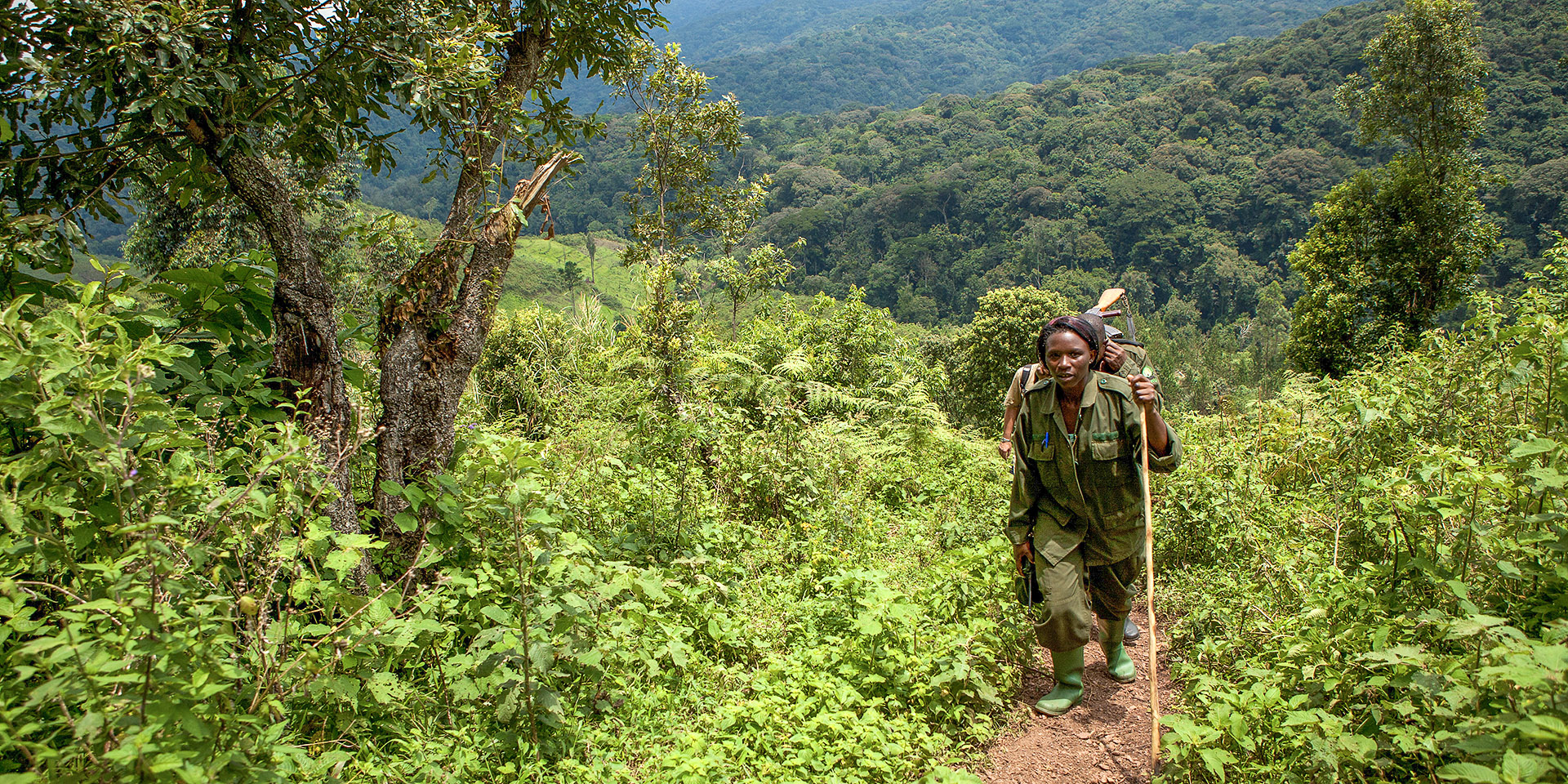
Trekking regulations in Bwindi Forest
strict rules for the benefit of the gorillas
Trekking regulations have been carefully developed to try to protect the health and well-being of the mountain gorillas and the safety of visitors. Gorillas are extremely susceptible to human diseases and infections. They can become stressed if visited by too many people, if the visitors approach too close or behave in other ways which they find disturbing or threatening. These are wild animals and particularly protective of their young. Please obey all of these rules to the letter …
1 : Sickness
If a visitor shows signs of sickness, the park staff have the right to refuse a visit to gorillas in order to protect the gorillas from contracting a human illness or disease. If you are not feeling 100% then please discuss this with your guides. Do not be the person responsible for a potential epidemic. If you do sneeze or cough in the proximity of the gorillas, then be sure to cover your mouth, preferably inside your shirt, in order to prevent any aerosol transmission.
2 : Group frequency and size
Each gorilla group can only be visited once per day, by a maximum of 6 or 8 permitted guests, with the interaction lasting a maximum of one hour. This is to minimise behavioural disturbance and stress.
On rare occasions guides may be tempted to bend the rules and take extra people on a trek. Please be sure to make a complaint at the time if you see this happening and report it to park headquarters.
3 : Minimum visitor age
Visitors must be at least fifteen years old, in order to minimise risk of exposing the gorillas to childhood diseases such as mumps, chickenpox, measles etc.
4 : Photography
Flash photographic is not permitted as it can upset or frighten the gorillas and may provoke an aggressive reaction or charge.
5 : Minimum distance
All visitors must remain at least seven metres or 21 feet away from the gorillas at times. If they approach closer … juveniles often come to within one or two metres, then you should slowly retreat. If this is not possible, then you will be asked to remain where you are. The instructions of the guide should be followed at all times. Keep your backpack and other items in places where young gorillas cannot approach to investigate. These regulations attempt to minimise disease transmission, stress and behavioural disturbance, to reduce the chance of possible aggression towards visitors and to prevent the gorillas becoming too habituated to humans.
Visitors are often keen to break this seven metre rule, being wrapped up in the excitement of the experience, but please be careful not to. If you break the rule then the guides may pull you off the sighting and terminate the trek.
In some instances guides may take you in closer in the hope of making you happy and perhaps getting better tips. Please do not do this and report any such behaviour to park headquarters.
Remember that this forest contains almost half of the world’s population and a serious epidemic disease could be catastrophic for the species. Don’t let this happen.
6 : Keep together
Visitors should remain in a tight group, without spreading out or surrounding the gorillas. This allows them plenty of room to move where they want to, without felling threatened, which may provoke a charge.
7 : Keep low
Where possible, visitors should sit or crouch whilst watching the gorillas. It can be very intimidating or threatening to the gorillas if you stand tall and stare, since this mimics their own aggressive behaviours.
8 : Keep still
Body language is important and visitors should not raise hands or arms, point or stare. To gorillas these behaviours are signs of threat or aggression.
9 : Do not disturb
Visitors should not clear vegetation close to the gorillas so that they get a better view as this can cause serious disturbance. The guides will clear away any vegetation if it is possible and necessary.
If you are at the back of the group of visitors and cannot get a good view, then make this known to your guide and he will try to get you into a better position.
10 : Don’t run
If a silverback gorilla beats his chest, displays or charges, do not run away. Your guides will be on hand. Although a charge may be frightening, the safest thing to do is remain still, keep low and look down. To our knowledge no visitor has even been hurt by a wild gorilla in this area.
11 : Don’t eat
Eating, drinking and smoking are not permitted within 200 meters of the gorillas as these behaviours can be intriguing and cause problems if they approach to investigate. Food and other remains can be a source of infection.
12 : Keep quiet
Visitors should be as quiet as possible, and whisper. Never scream, even if you are bitten by safari ants or stung by a nettle. Making a lot of noise may cause some gorillas to react aggressively, but most will simply move away.
13 : Bury your doings
Please go to the bathroom before you set out. If you need to go to the toilet whilst in the forest, then you need to borrow a machete from the guides and dig a 30cm or 10″ deep hole and then fill it in properly afterwards. Faeces can be highly infectious to gorillas and other animals.
14 : Leave no litter
All trash must be removed from the park and visitors are asked to be particularly careful not to drop small items, notably used tissues or wipes.
15 : What to bring and wear
Whichever family group you visit, you may have to walk a long distance in steep, muddy conditions, possibly in heavy rain.
- sturdy shoes are essential, proper high-ankle walking boots are preferable
- gaiters or long socks that you can tuck in
- pants/trousers should be thick to protect from insects and stinging nettles
- a long sleeved over-shirt is useful against the morning chill and insects
- gardening gloves can be very useful when climbing steep slopes
- a poncho or other waterproof jacket may be worthwhile
- sunscreen
- a hat
- at least two litres of bottled water
- sufficient covers to protect you camera gear from the elements
- binoculars are optional, but especially useful for birders
The gorillas are thoroughly used to people, so it makes little difference whether you wear bright or muted colours, although out of respect for your fellow travellers you really should make the effort to wear appropriate clothes for the forest … bright and inappropriately dressed people can really mess up photos and videos.
15 : Tipping guide
For gorilla tracking, each guest should tip the head guide around USD 20 and each porter USD10-15. No USD notes earlier than 2006 are accepted.
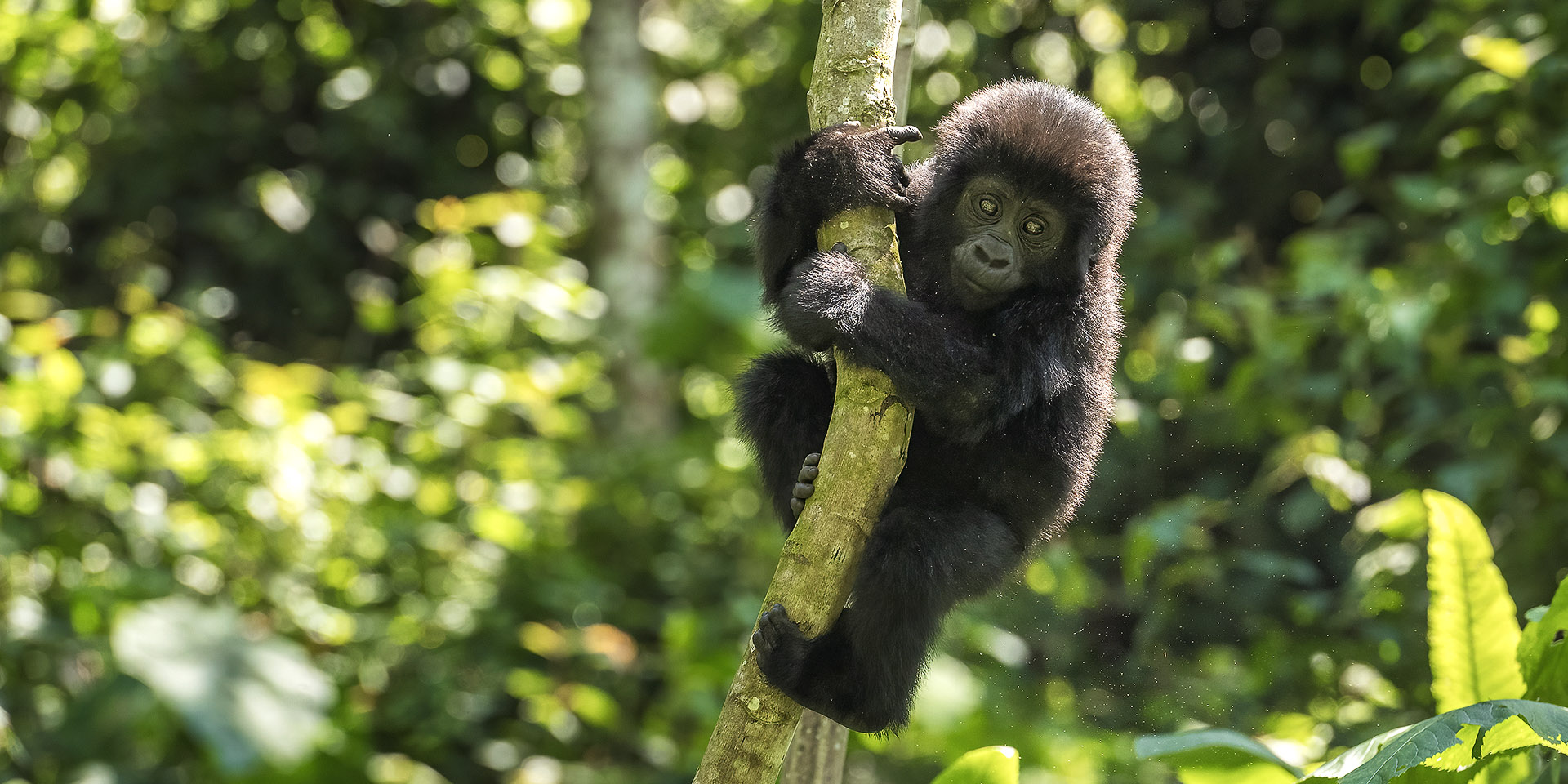
let us know your thoughts about Uganda
and we will help you create the perfect trip
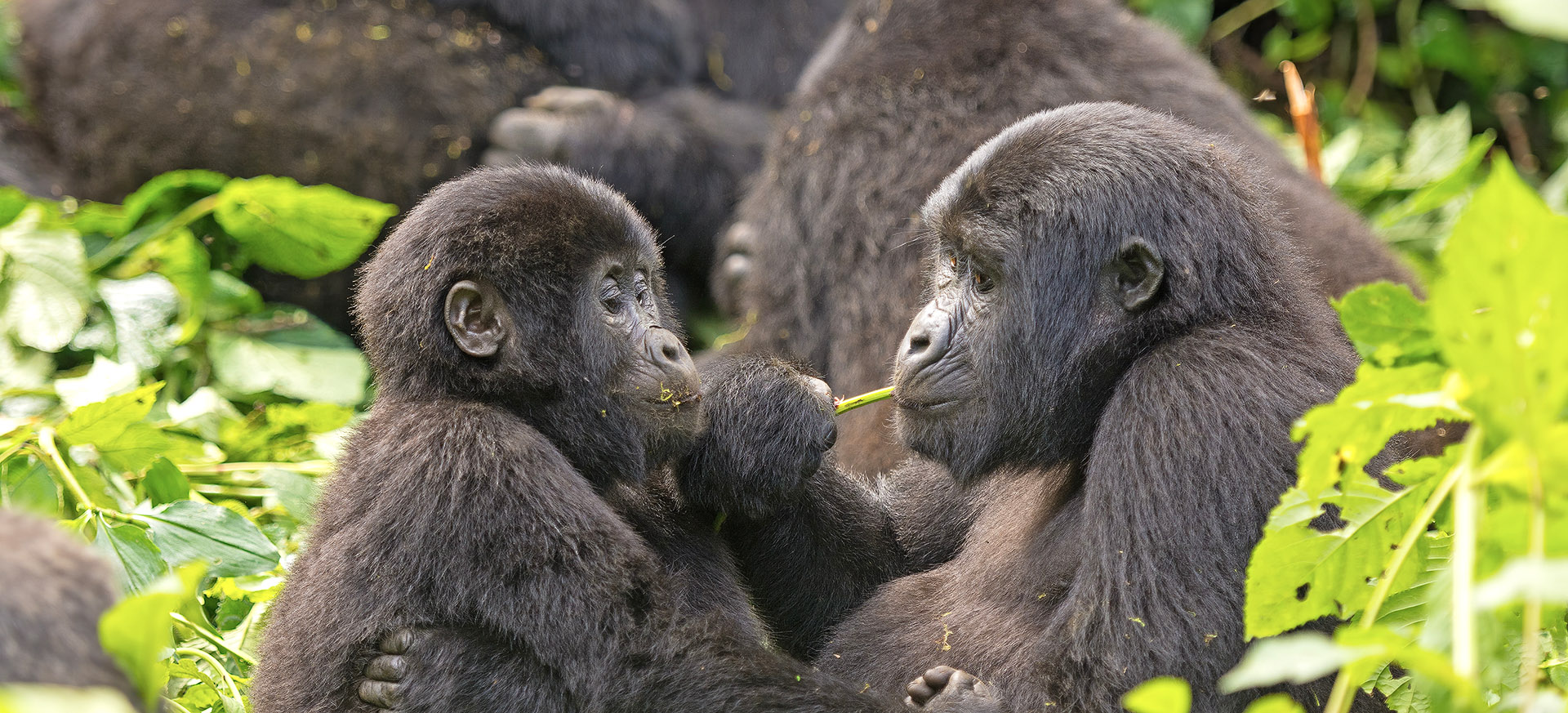
Extraordinary tailor-made adventures,
from earthy and edgy to easy and extravagant
From around USD 2500 per person, you set the ceiling
Sample Trips
Here are some of our popular trip shapes
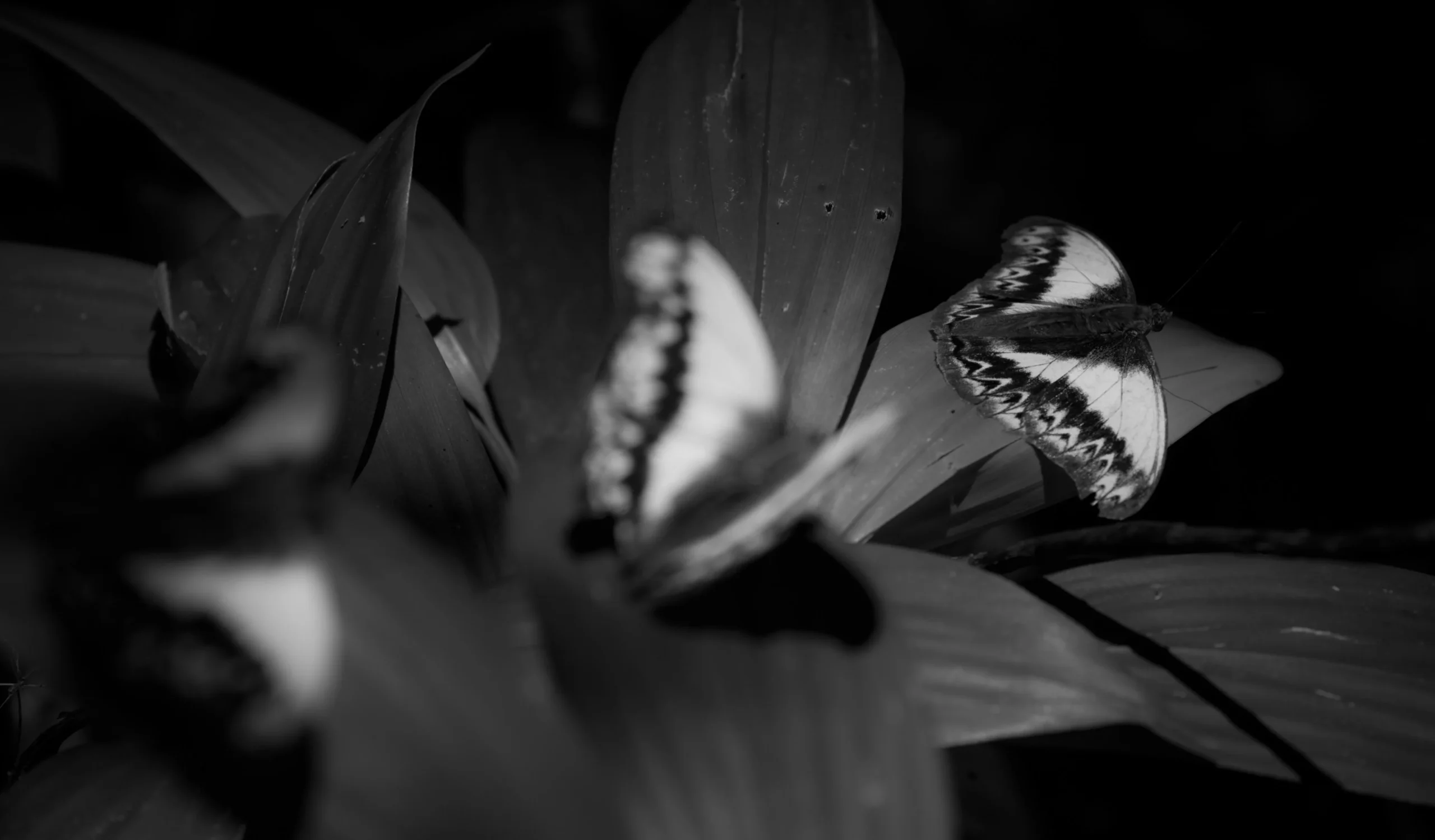
Get started on your trip
It’s never too soon to get in touch, we are here to help with every stage of your planning.
Best Lodges
We regularly inspect and photograph all of the the best lodges, to ensure that we always recommend the most suitable options
Key Locations
Take a look around related locations. Click ‘View more’ to explore locations further afield.
